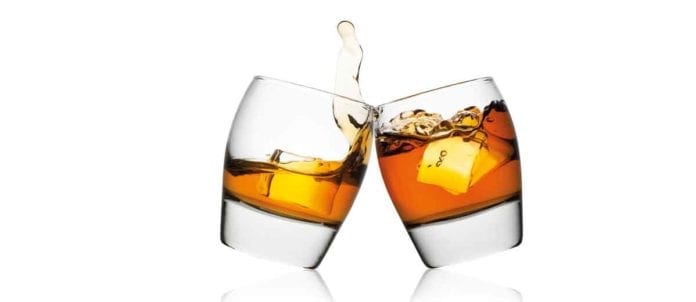The popularity of Scotch whisky is growing by more than just a wee dram. Led by increased interest in a heightened and robust cocktail culture, scotch sales have steadily increased over the last decade and have further intensified in the past few years. “There’s been a rise, in general, in the interest around brown spirits. One result is more interest in scotch,” says Matt Howell of Collective Arts Brewing, who holds a Master’s degree in brewing and distilling from Heriot-Watt University in Edinburgh, Scotland. He adds that scotch is no longer grandpa’s drink. “It’s become a younger, trendier thing, which is driving demand.”
The demand at Ontario’s LCBO is primarily for blended deluxe offerings — a result of what Peter Cloutier, category manager – Brown Spirits, calls “premiumization,” which has seen sales climb in the $40-and-up price point. “That is dominated by Johnnie Walker — a big brand that has a strong marketing spend behind it, which allows it to stay top-of-mind as a customer favourite,” Cloutier says.
But the times, they are a-changin’. In Calgary, Andrew Ferguson of Kensington Wine Market has seen steady growth for more than a decade. However, he notes that sales of bulk scotch out of Scotland have, in fact, decreased globally.
“Whisky in general has taken off. It’s been a growing category now for probably 15 years, but there’s been a shift towards the premium and away from the bulk. The value has increased, however. More people are drinking single malts and fewer are drinking basic blends,” Ferguson explains.
Bob Scott, executive vice-president of Cape Breton, N.S.’s Glenora Distillery — North America’s first single-malt whisky distillery— states what might seem obvious but nevertheless should be pointed out: part of his company’s growth over roughly two decades can be credited to a boom in Internet information about the success of the whisky process in general.
“When we launched our product, we watched as the world was opened up to seeing a lot of whiskies from around the globe. Single malts and whiskies of the world have seen increases one-hundredfold,” says Scott.
Ferguson quantifies the shift, noting that years ago, the LCBO would sell 20 to 25 cases of Oban and Lagavulin annually. “Now, I’d be surprised if we sold four cases of each — yet we’re selling 10 times the amount of whisky overall. Customers want new,” he says. Looking ahead, Ferguson foresees a market with some consumers looking for the prominent well-known brands and willing to spend $40 to $50 on whisky, but this group may eventually move on to another spirit entirely. “The people drinking single-malt whisky at the higher end, I don’t see moving away, except to other whisky categories, including craft products from India, Canada, the United States and Australia — whiskies that are as good as those from Scotland.”
He also sees the risk of what he calls “whisky-flation.” What was once a $50 bottle 10 years ago is 50- and even 100-per-cent more expensive now. “Customers at the lower-middle end are getting pushed out of the market.”
Otherwise, both Cloutier and Howell say that Scotch producers are stepping into new flavour territories and techniques — certainly not a new trend in food and beverage, generally — through techniques such as finishing scotch in IPA beer barrels. “Master blenders are challenging each other and trying out innovative techniques such as marrying different casks after they are produced. There is more of an artisanal aspect to scotch than ever seen before,” Cloutier says. Similarly, Howell anticipates more innovation and a wider range of what he sees as “new, small-batch farmhouse distilleries in Scotland” offering limited releases of their product, which will entice consumers looking for a wee sip of what’s new. “It’s really just a part of the craft culture,” he says. “That’s certainly something we’ve seen and are familiar with here in North America.”
Written by Andrew Coppolino


















